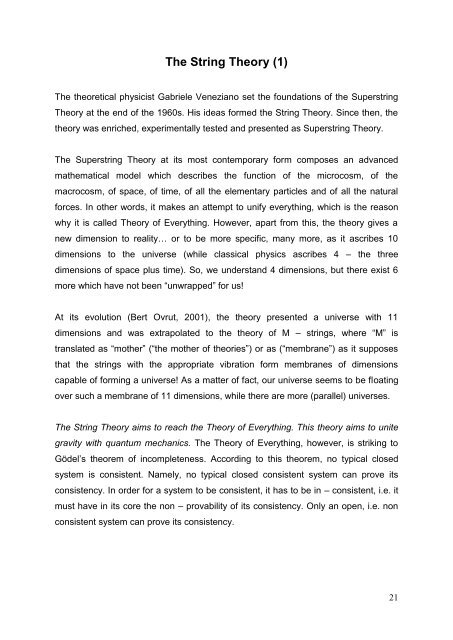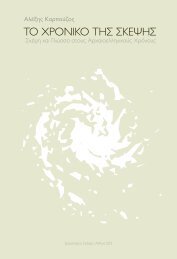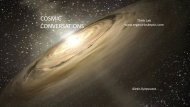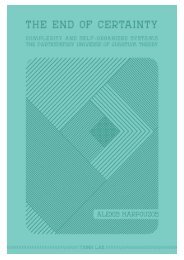COSMOLOGY, PHILOSOPHY AND PHYSICS -ALEXIS KARPOUZOS
The universe is not a world of separate things and events but is a cosmos that is connected, coherent, and bears a profound resemblance to the visions held in the earliest spiritual traditions in which the physical world and spiritual experience were both aspects of the same reality and man and the universe were one. The findings that justify this new vision of the underlying logic of the universe come from almost all of the empirical sciences: physics, cosmology, the life sciences, and consciousness research. They explain how interactions lead to interconnections that produce instantaneous and multifaceted coherence–what happens to one part also happens to the other parts, and hence to the system as a whole. The sense of sacred oneness experienced by our ancestors that was displaced by the unyielding material presumptions of modern science can be restored, and humanity can once again feel at home in the universe.
The universe is not a world of separate things and events but is a cosmos that is connected, coherent, and bears a profound resemblance to the visions held in the earliest spiritual traditions in which the physical world and spiritual experience were both aspects of the same reality and man and the universe were one. The findings that justify this new vision of the underlying logic of the universe come from almost all of the empirical sciences: physics, cosmology, the life sciences, and consciousness research. They explain how interactions lead to interconnections that produce instantaneous and multifaceted coherence–what happens to one part also happens to the other parts, and hence to the system as a whole. The sense of sacred oneness experienced by our ancestors that was displaced by the unyielding material presumptions of modern science can be restored, and humanity can once again feel at home in the universe.
You also want an ePaper? Increase the reach of your titles
YUMPU automatically turns print PDFs into web optimized ePapers that Google loves.
The String Theory (1)<br />
The theoretical physicist Gabriele Veneziano set the foundations of the Superstring<br />
Theory at the end of the 1960s. His ideas formed the String Theory. Since then, the<br />
theory was enriched, experimentally tested and presented as Superstring Theory.<br />
The Superstring Theory at its most contemporary form composes an advanced<br />
mathematical model which describes the function of the microcosm, of the<br />
macrocosm, of space, of time, of all the elementary particles and of all the natural<br />
forces. In other words, it makes an attempt to unify everything, which is the reason<br />
why it is called Theory of Everything. However, apart from this, the theory gives a<br />
new dimension to reality… or to be more specific, many more, as it ascribes 10<br />
dimensions to the universe (while classical physics ascribes 4 – the three<br />
dimensions of space plus time). So, we understand 4 dimensions, but there exist 6<br />
more which have not been “unwrapped” for us!<br />
At its evolution (Bert Ovrut, 2001), the theory presented a universe with 11<br />
dimensions and was extrapolated to the theory of M – strings, where “M” is<br />
translated as “mother” (“the mother of theories”) or as (“membrane”) as it supposes<br />
that the strings with the appropriate vibration form membranes of dimensions<br />
capable of forming a universe! As a matter of fact, our universe seems to be floating<br />
over such a membrane of 11 dimensions, while there are more (parallel) universes.<br />
The String Theory aims to reach the Theory of Everything. This theory aims to unite<br />
gravity with quantum mechanics. The Theory of Everything, however, is striking to<br />
Gödel‟s theorem of incompleteness. According to this theorem, no typical closed<br />
system is consistent. Namely, no typical closed consistent system can prove its<br />
consistency. In order for a system to be consistent, it has to be in – consistent, i.e. it<br />
must have in its core the non – provability of its consistency. Only an open, i.e. non<br />
consistent system can prove its consistency.<br />
21









